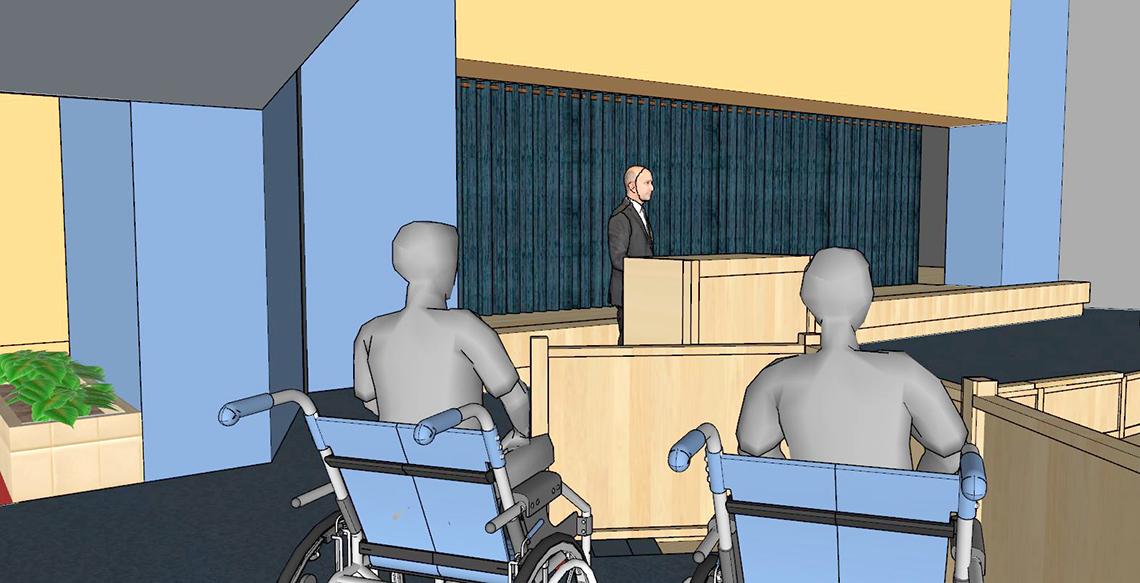Updates in Two Phases
Masur Auditorium To Be Renovated

Masur Auditorium in Bldg. 10 has played host to thousands of scientific lectures, symposia and VIP events. Guests including Stephen Hawking, Jane Goodall, Yo-Yo Ma, Alan Alda, Bill Gates and many Presidents are but a few of the luminaries that have graced the stage over the years.
The Office of Research Services and the Office of Research Facilities are partnering to make Masur more accessible and to update the audio-visual systems and video production capabilities. The auditorium will close in late November for 45-90 days for phase 1 of a two-part renovation. During the closure, the lower stage will be modified and tied into the southwest door threshold. This will allow wheelchair access to the lower stage and podium, without requiring a lift.
The ORS Events Management Branch staff will be providing a more accessible venue to the scientific community and the public. The proposed AV designs and equipment will improve resolution, brightness and flexibility, allowing simplified execution of complex AV and video production support.

Today’s scientific lectures are more complicated, requiring ultra-high resolution presentation and display equipment while incorporating social media. Gone are the days of toting a carousel of slides and loading them for your lecture. Presentations are full of animations, videos, music and ultra-high definition images. Attendance was once limited to those who had time to come to the auditorium. Now, scientific lectures are broadcast to the world. Social media access allows for instantaneous questions, feedback and polling, including Facebook live events. Providing two-way communication more than doubles the complexity, equipment and expertise required to sync up all audio, visual and personnel requirements.
Phase 2 addresses issues with the back stage and is expected to take place in late 2020. The current designs will allow wheelchair access to the VIP green (waiting) room and two new restrooms located on the southwest side of the stage.
NIH looks forward to offering scintillating lectures, symposia and rock concerts for years to come. With these upgrades, events staff will be able to offer state-of-the-art technology and access for all guests and employees, regardless of their level of mobility. Stay tuned and don’t touch that remote.
